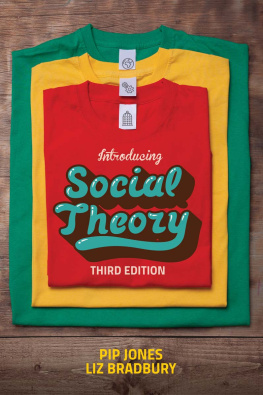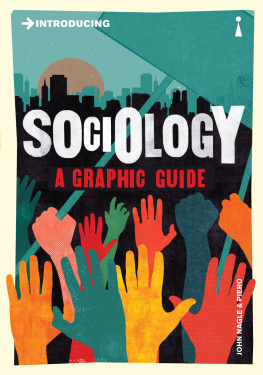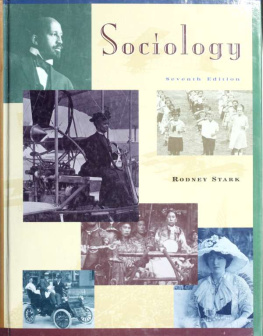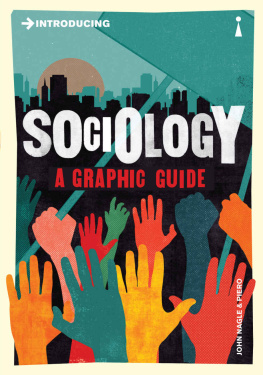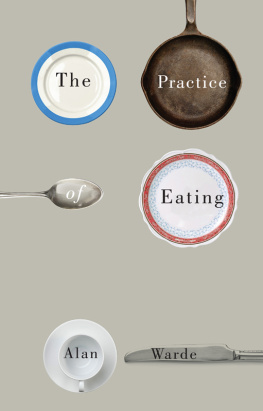INTRODUCING THE SOCIOLOGY OF FOOD & EATING
In memory of my father
Simmon Latutin G.C. (19161944)
Also available from Bloomsbury
THE FOOD AND FOLKLORE READER
Lucy Long
FOOD STUDIES
Willa Zhen
THE HANDBOOK OF FOOD RESEARCH
edited by Anne Murcott, Warren Belasco & Peter Jackson
THE SOCIOLOGY OF FOOD
Jean-Pierre Poulain
WHY FOOD MATTERS
Melissa Caldwell
INTRODUCING THE SOCIOLOGY OF FOOD & EATING
CONTENTS
PREFACE
Nothing remotely like the phrase the sociology of food and eating could be found when I edited a small collection of specially commissioned essays using it as the title (Murcott 1983a). Thereafter my work covers a wide range of topics conceptions of meals (1982) GM foodstuffs (1999a, 2001) changes in taste during pregnancy (1988b) food as national identity (1996) the history of UK food and nutrition policy (1994, 1999b) womens ideas of good food (1993) the elusiveness of eating (2013b) etc. developing ethnographic investigations, textual studies, and devising symbolic interactionist analyses.
Three decades later it has become a clich to observe how greatly and rapidly the field has expanded (Murcott 2013a). The broader backdrop is, of course, the huge rise in personal, public, practical and policy, never mind celebrity and commercial interest in what and how people eat, in who has too much and who has too little. An ability to pick an informed way through this deluge of discussion and debate is needed as a sound basis for helping assess the rights and wrongs of it all. My purpose is, however, not to give advice about what to do, but to contribute to providing that firm basis. For the expansion of research has not been matched by a sufficiently steady improvement in quality. There is a tendency to rely far too heavily on reproducing what undeniably thoughtful journalists and food writers have to offer in place of well-grounded sociological appraisal. Furthermore, grand generalizations are too readily based on the self-referential preoccupations about food and eating of those in wealthy countries, with too little heed to comparison historically or geographically. These and more limitations find their way into textbooks. As a result, undergraduate students in particular are not being as well served as they deserve.
It would be very foolish to think that this book could remedy every ill detectable in existing contributions. And this is not the place for critiques of poor-quality contributions. Instead the book tries to exemplify what is good, distinctively sociological (or similar) work. Evidence lies at the heart of the discipline, requiring concomitant attention to the manner in which a topic is conceptualized for investigation, the way good-quality appropriate evidence is amassed and the manner in which it is to be interpreted. These are encapsulated in this books talking of sociological thinking.
It would be equally foolish to imagine this book could be comprehensive in its coverage of relevant topics or in the range of sociological approaches and theoretical perspectives represented. The scope is limited to the ingestion of solid items (but on water see Wilk 2006, on alcoholic accompaniments to meals see Zubaida 2014). Omitted completely is consideration of items other than sources of nourishment that go into the mouth, from chewing gum (Redclift 2004), drugs of all kinds, stimulants such as caffeine, khat, coca leaf or tobacco, from charcoal- coal- or earth-eating (geophagia) or other unorthodox items (McClancy, Henry and Macbeth 2007). Equally there is no space to discuss the culturally and historically moveable lines between the categories of foods, drink or medicines (Adelman and Haushofer 2018). Social aspects of conditions such as eating disorders or other diet-related medical conditions (e.g. diabetes or food allergy) are also excluded, as is analysis of the social and political aspects of obesity (Guthman 2011, Monaghan 2008).
The main pedagogic intent of this book concerns identifying and conveying what is peculiarly sociological perspectives shared with its close relatives of anthropology, cultural geography and social history. These are distinct from the increasing clamour of various popular, policy and practitioner voices commenting on food, also different from more distant disciplinary contributions. This is not to claim superiority of the sociological over other disciplines. Neither is it to debunk or decry commentaries from other quarters, even though it strongly advocates scientific scepticism. Rather, it aims to illuminate something different from them, something that also has a value when trying to understand what is going on, along with stressing the importance of a stronger, evidenced, basis for effective action.
The book is introductory in two ways. It presents the sociology of food and eating to readers who have not met it before. It also aims to introduces the discipline of sociology via discussions of research on food and eating. Either way, no previous familiarity with the discipline (or indeed with any of the social sciences) is assumed. But it is not just to serve undergraduates. It is also to stand as an introduction for graduate students turning to the study of food and society for the first time, and indeed, for those known to academic publishers as interested general readers. The text keeps technical vocabulary to a minimum and explains significant terms when they are introduced.
Above all, in placing evidence at the centre, this book seeks to make sociological thinking clearer, more explicit and based on something more secure more scholarly even than has always been sufficiently obvious in the enormous expansion of the field. Furthermore, it attempts to contribute to the much-needed improvement in quality by introducing research procedures design, method, occasionally ethics wherever feasible. The book does not rely on reciting findings but emphasises concentrating on what sociological thinking might look like in the search for good quality evidence which lies at its heart.
**************************
A word is needed about the reproduction on the cover of Breakfast, a 1955 painting by Alfred Janes. Incidentally my reasons for choosing to reproduce the work are unlikely to have crossed the artists mind, for many of the pieces Janes made during the 1950s deal with his preoccupation at the time with the way hands and faces come together. Ordinarily I am vehemently opposed to sociology book covers carrying illustrations of people, let alone sociology books on food that are decorated with gorgeous displays of fruit or nineteenth-century grocers shop fronts, shopping trolleys/carts or cheery picnics. For newcomers to sociology are often taken aback that the discipline can be so intensely abstract and I can see no reason for a cover to mislead them further. In addition to admiring the painting, I have a particular reason for making an exception here, which is where Chapter One starts.
ACKNOWLEDGEMENTS
This book nearly did not get written, and once begun almost did not get finished. Just as I started, 18 months of major construction work (still continuing as I write) began immediately next door with no advance notice, becoming so unbearably disruptive as to make work impossible. That this book has appeared is thanks to the many good friends who, in addition to family, kindly offered space to work: Alan Berrill, Andrew George, Jane Hill, Colin Hutchens, Hilly Janes, Virginia Low, Gerry McMullan, David McVicar, Jeanette Page, Sara Shepherd, Sarah Weir and most particularly those who, for extended periods, generously housed me, my laptop, piles of books and mounds of papers: Hilary Rose and Steven Rose; Lindy Sharpe and Ian Jack; Chris Thompson and Dorothy Thompson; Anne Pyburn and Rick Wilk.





